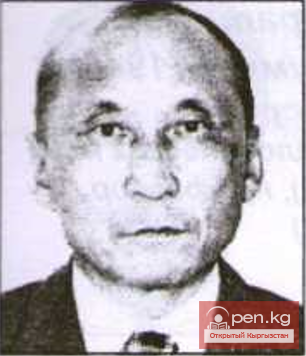
Deep ancient local traditions in the art of the Kyrgyz can be traced when studying the ornamentation of the domes, which our predecessors paid little attention to. Three types of ornament were used in the decoration of Kyrgyz burial sites: painting, appliqué, and patterned brickwork.
One of the oldest motifs painted on the walls of the domes is solar symbols in the form of multi-petaled rosettes with spiral curls and whirling rosettes. They are noted in the Baytyk dome (near Bishkek), the dome in the village of Kozuchan (Talas Valley), and in other burial structures. In the steppes of Kazakhstan and in the valleys of Kyrgyzstan, the image of the whirling rosette, which symbolizes the sun, is known as early as the 14th-12th centuries BC. Multi-petaled rosettes have also been found in catacomb burials (1st-5th centuries AD) in the Ketmen-Tube Valley. Here, they are carved from bright yellow sheet gold. The type of whirling rosette that Kyrgyz artists applied to the Baytyk dome was finally formed by the 10th-12th centuries. It is most often found on the bottoms of polychrome glazed pottery, which has been found in large quantities by archaeologists during excavations of settlements in the Chui and Talas valleys. It is also remarkable that Kyrgyz masters did not forget the meaning of this image. Even in the 20th century, when asked what such a whirling rosette in the ornament means, they replied: "kun" (sun).
Equally ancient is the motif depicted on the portal of the dome in the village of Kozuchan (Talas Valley). Here, a solar symbol crowns the head of a dog. Similar compositions in the territory of Kyrgyzstan are known from the time of the formation of nomadic communities and date back to the late Bronze Age - early Iron Age, that is, up to 3,000 years ago. On the rocks of Saymaly-Tash, figures of goats, argalis, and even a man with a sun head are depicted. They could represent a solar deity in the form of an animal or a human, as an ancestor of a particular tribe. If we recall that in the genetic traditions of the Kyrgyz, the dog has a quite specific role, it is possible that a similar meaning was also embedded in the image of the sun-dog on the studied dome.
Solar symbols are found not only on the domes but also on many other objects decorated with Kyrgyz ornamentation, and they could have various meanings. In the cases we recorded, images of the sun on the domes, as well as on stone grave epitaphs, signified a wish for eternity for their ancestors.
The motif of appliquéd images of ram's horns, sharply bent in a spiral, which adorned the dome of the dome in the village of Lama (Jumgal), takes us back to deep antiquity. This motif was widely spread among the nomads of Ala-Too in various historical epochs, starting from the 5th-4th centuries BC.
The ornamentation of the portals of Kyrgyz domes with special patterned brickwork is the most common type of their decoration. Triangles, "towns," rhombuses, and cross-shaped figures were laid out with bricks. Sometimes, masters used the technique of lace brickwork against the background of the wall body. Such architectural decor techniques have been known in the territory of Kyrgyzstan since at least the 11th-12th centuries, when they found their brilliant embodiment in the ornamentation of the Burana tower and the burial complex in Uzgen.
The portal of the Kyrgyz mausoleum in the village of Ak-Moyun attracted the attention of experts in ancient architectural ornament. Its wall is crowned with alternating step-like projections, giving the structure the appearance of a castle or fortress. Similar details once adorned the castles of Sogdian farmers in Semirechye, as recorded by archaeologists during excavations in the Chui Valley. They date back to the 6th-8th centuries. As far as we know, in the era of developed and late medieval times, stepped battlements were not used as architectural details of fortifications; the chain of succession was interrupted. One cannot help but wonder how deep into antiquity the memory of the Kyrgyz folk master can penetrate if it has preserved not only the form but also its functional purpose?
At the same time, there was a noticeable Islamic influence, especially in certain madrasas, mosques, and domes, expressed both in the borrowing of motifs and in the arrangement and technique of making the ornament. A characteristic example in this regard is the carved door from the Arslanbob Mazar in Southern Kyrgyzstan. It has long been removed from its hinges and rests in the courtyard of this famous dome.
Ornament of the carved door of the Arslanbob Mazar
Kyrgyz decorative applied art has deep roots, including local ones, tracing back to the culture of early nomads. It continued to develop during the period of Turkic state formations and in the post-Mongolian era from the 16th to the 19th centuries, which is reflected in archaeological materials and architectural decor, in carpet weaving and felt production, jewelry art, and the construction of domes. The closeness of many ornamental motifs and burial structures—domes among nomadic Uzbeks, Kazakhs, Karakalpaks, and Kyrgyz—was due to their kinship, the common origin of certain clans and tribes, cultural ties over the centuries, relationships with settled agricultural peoples, and the cultural significance for nomads of the same major urban centers with which they were economically connected.



















































